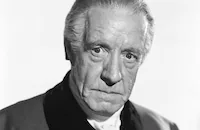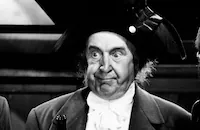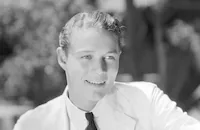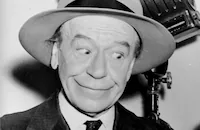Sensing all the ingredients for a box office success, MGM's Irving Thalberg personally selected China Seas for stars Gable and Harlow - the fourth on-screen pairing of the sex symbols - in an attempt to repeat the success of their recent match-up in Red Dust (1932). "To hell with art this time," the MGM boy wonder is rumored to have said. "I'm going to produce a picture that will make money." Thalberg not only produced China Seas, he also reportedly meddled in director Tay Garnett's domain, visiting the set daily and coaching actors on their performances.
In addition to its romantic triangle dominated by a jealousy-driven China Doll as the platinum spit-curled "entertainer" obsessed with Captain Gaskell are a host of equally compelling performances, including a menacing Wallace Beery as the duplicitous merchant Jamesy MacArdle, intent on helping pirates rob the ship of its gold. Another of the Beery clan, adopted daughter Carol Ann also makes an appearance as the child Gaskell saves from being crushed to death by a grand piano careening around the ship's saloon in the midst of a typhoon. And before she was Scarlett O'Hara's maid in Gone With the Wind (1939), Hattie McDaniel appeared in several humorous scenes in China Seas as China Doll's maid, Isabel. Algonquin Round Table humorist Robert Benchley also appears as a "drunken American novelist" passenger on Gaskell's ship whose slurred speech, stumbling gait and dipsomaniac pratfalls provide ample comic relief when the tension between Gaskell, China Doll and Sybil becomes too much.
But the real attraction of China Seas was the white-hot duo of Gable and Harlow. Harlow's smoldering sensuality was especially well used in a performance that many noted bore a striking similarity to Marlene Dietrich's traveling temptress Shanghai Lily in 1932's Shanghai Express, which was no wonder since screenwriter Jules Furthman penned both scripts.
And though fireworks fly between Rosalind Russell's Sybil and China Doll, off the set Russell claimed to find Harlow charming and one of the few female stars she could get along with in Hollywood. "I loved her" she said in her autobiography Life's a Banquet, though Russell found her role as Harlow's rival in China Seas patently absurd. "It was ludicrous. There would be Jean, all alabaster skin and cleft chin, savory as a ripe peach, and I'd be saying disdainfully...'How can you spend time with her? She's rather vulgar, isn't she?" Harlow, who died just two years after making China Seas eventually surpassed her early type-casting as a one-note floozy to bring a real sense of comic timing to many of her film roles and a genuine pathos to her love-stricken lower-class dame in China Seas, one of her most memorable roles.
Director: Tay Garnett
Producer: Irving Thalberg
Screenplay: Jules Furthman and James Kevin McGuinness from the novel by Crosbie Garstin
Cinematography: Ray June
Production Design: Cedric Gibbons
Music: Herbert Stothart
Cast: Clark Gable (Alan Gaskell), Jean Harlow (China Doll), Wallace Beery (Jamesy MacArdle), Lewis Stone (Davids), Rosalind Russell (Sybil Barclay).
BW-88m. Closed captioning.
by Felicia Feaster






































